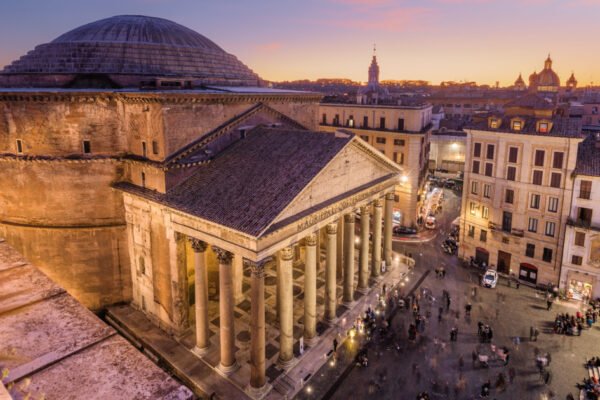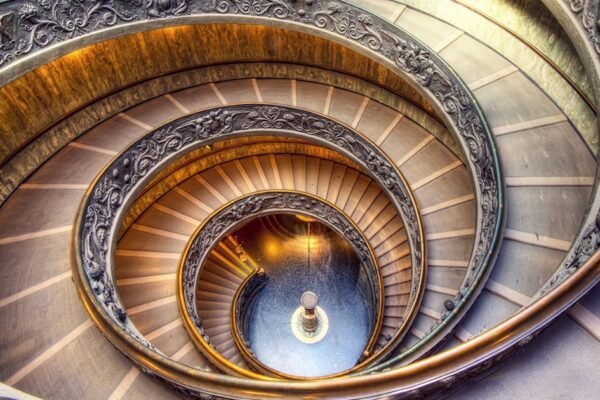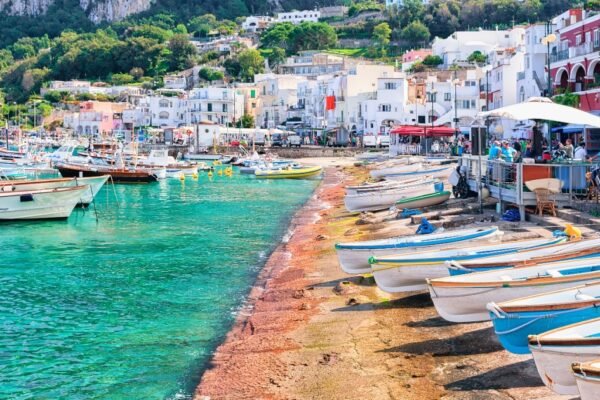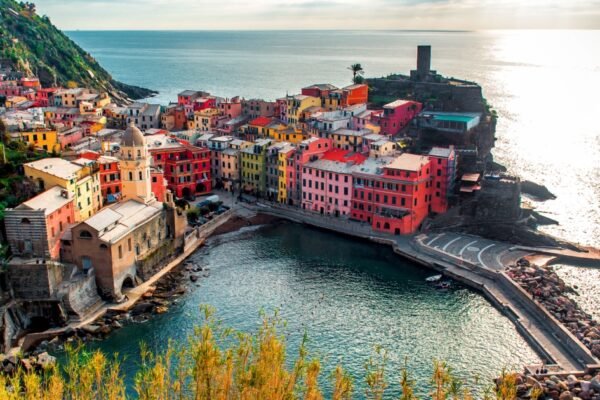Frequently Asked Questions about the Colosseum in Rome
Frequently Asked Questions about the Colosseum in Rome
On this page, find answers to the frequently asked questions about the Colosseum, Rome’s iconic amphitheater, ensuring you have a comprehensive understanding and a truly enriching experience.
Divided into three categories – admission, visiting the Colosseum and unveiling its history – our FAQs offer valuable insights for both first-time visitors and seasoned travelers alike.
Frequently Asked Questions about Colosseum Admission
Colosseum admission starts at €19, providing priority entry to Colosseum Floors 1 & 2, as well as access to the Roman Forum, and Palatine Hill. There are a range of other entry options, such as guided tours or access to special areas like the Underground, the Colosseum Arena, and the Belvedere, as well as combo deals visiting other must-see sites like the Vatican.
>> See our handpicked selection of the most popular entry options.
Regular Colosseum admission doesn’t grant access to specific zones like the Underground, upper tiers, or the Arena. Separate guided tours or special passes are required to explore these areas.
>> Check out our selection of the top-rated Colosseum entry options and tours.
Frequently Asked Questions about Visiting the Colosseum
The Colosseum is located in the heart of Rome, Italy. Its precise address is Piazza del Colosseo, 1, 00184 Roma RM, Italy. This iconic amphitheater is easily accessible and is situated near other historical landmarks, making it a central and prominent destination in the city.
Yes, you can visit the Colosseum and explore its interior. However, you will need to secure admission to enter this popular UNESCO heritage site. Guided tours are also available, providing more in-depth information about the Colosseum’s history and architecture.
Absolutely! Entering the Colosseum allows you to truly experience the scale and grandeur of the structure and gain a deeper understanding of its history and function. Additionally, the Colosseum offers stunning views of the Roman Forum and Palatine Hill. However, if you’re on a tight schedule or have limited mobility, you might prefer to explore the Colosseum from the outside.
Stepping inside the Colosseum, you’ll find yourself gazing upon the vast arena floor, where gladiators once clashed and wild animals roamed. Beneath your feet lies the Hypogeum, a hidden network of tunnels and chambers – the gladiators’ world, complete with holding cells, animal cages, and even machinery for staging elaborate spectacles. Look up, and you’ll see the tiers of seating that once accommodated 50,000 spectators, with the Emperor enjoying a privileged view from his private box. There is also the Colosseum Museum, showcasing authentic armor, ancient weapons, archaeological excavations, and other items that provide a comprehensive understanding of the Colosseum’s cultural and historical context.
Yes, you can take pictures inside the Colosseum for personal use. Photography is generally allowed throughout the interior, including the arena floor, Hypogeum, and seating tiers. However, keep in mind that Tripods and other professional photography equipment are not allowed unless you have obtained a special permit beforehand. This is to avoid obstructing other visitors and for the preservation of the monument. Flash photography is also discouraged as it can damage the artwork and be disruptive to other visitors.
Colosseum has made efforts to enhance accessibility for visitors. The monument is equipped with ramps and elevators to facilitate entry for individuals with mobility challenges. However, due to its ancient architecture, some areas, especially the higher tiers, may be challenging for wheelchair users.
The Colosseum lacks storage facilities for baggage. It’s essential to avoid bringing bulky bags, backpacks, luggage, or trolleys, as they are prohibited within the premises. However, small to medium-sized backpacks are permitted.
Frequently Asked Questions about the Colosseum History
The Colosseum was built between 70-80 AD under the emperors Vespasian and Titus of the Flavian dynasty. Its construction was part of a series of monumental building projects initiated by the Flavian emperors to showcase their power and restore public confidence after the tumultuous Year of the Four Emperors (69 AD).
The Colosseum was primarily built as a venue for public spectacles, including gladiator contests, animal hunts, executions, and mock sea battles. These events were a means for emperors to demonstrate their generosity to the people and to maintain social order by providing a form of mass entertainment. The Colosseum could accommodate tens of thousands of spectators and became a symbol of Roman engineering and architectural innovation.
The missing half of the Colosseum is a result of centuries of natural disasters, vandalism, and human activities. Much of the Colosseum’s original stone and marble were reused in various construction projects throughout Rome over the centuries, contributing to the gradual decline of the monument. Additionally, earthquakes, fires, and other natural disasters took their toll on the Colosseum. The southern side of the Colosseum, in particular, was severely damaged by a major earthquake in 1349. The damage was substantial, leading to the collapse of a significant portion of the outer wall.
It’s challenging to determine an exact number of gladiators who died in the Colosseum, as historical records on such details are limited and often imprecise. Estimates suggest that over the approximately 350 years the Colosseum hosted events, up to 400,000 individuals, including gladiators, slaves, convicts, prisoners, and various other performers, may have met their demise within its walls. The amphitheater bore witness to a significant loss of life during its use for a range of human blood sports and spectacles, highlighting the brutal nature of the entertainment that took place in ancient Rome.
Estimating the exact number of animals killed in the Colosseum is challenging, as historical records from ancient Rome provide varied and imprecise information. It’s estimated that approximately one million animals lost their lives during the 390 years of the Colosseum’s activity. The introduction of a spectacle known as “venatio”, essentially translating to hunting, was a prominent feature in amphitheaters throughout ancient Rome. This practice involved the staged combat and display of wild animals, contributing to a substantial toll on various species over nearly four centuries within the amphitheater’s walls.
The holes in the Colosseum, known as “putlog holes,” served a practical construction purpose. These holes were used during the initial construction of the Colosseum to support a series of wooden scaffolding or structures that facilitated the construction process. The Colosseum was built using a complex system of Roman concrete, bricks, and stone blocks. The putlog holes were created by inserting wooden beams into the gaps left in the structure as it was built. These beams provided support for the scaffolding used by workers as they constructed the upper levels of the amphitheater.
The “Porta Libitinensis”, commonly referred to as the “Gate of Death” or “Death Gate,” was not a specific gate in the Colosseum but a symbolic term associated with gladiatorial combat. In ancient Roman amphitheaters, including the Colosseum, the Porta Libitinensis was a gate used to remove the bodies of deceased gladiators and animals after the conclusion of events. This gate served as the exit point for those who did not survive the brutal contests within the arena. The name “Libitinensis” is derived from the Roman goddess Libitina, who was associated with funerals and death. While the Colosseum itself does not have a designated “Gate of Death,” the concept reflects the grim reality of the fate that awaited many participants in the gladiatorial games held in Roman amphitheaters.
The Colosseum’s real name is the “Flavian Amphitheatre” (in Latin, “Amphitheatrum Flavium”). It was named after the Flavian dynasty of emperors who commissioned its construction: Vespasian, Titus, and Domitian. The construction of the Colosseum began under the rule of Emperor Vespasian around 70-72 A.D. and was completed in 80 A.D. during the reign of his successor, Titus. The amphitheater earned its nickname “Colosseum” due to the colossal statue of Nero, the “Colossus of Nero,” that once stood nearby. Over time, the name Colosseum became widely used to refer to this iconic Roman structure.










